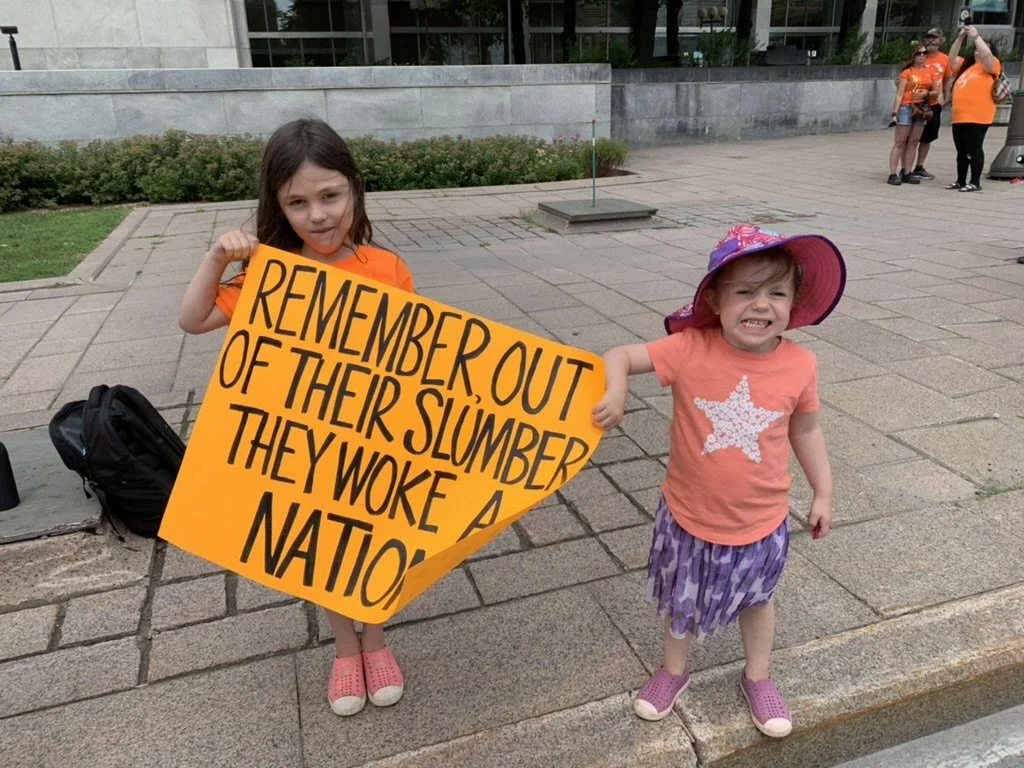beyond the orange shirt: how i practice reconciliation every day
Today is Truth and Reconciliation Day in Canada—Orange Shirt Day.
On the car ride to school with my 11 year old and soon-to-be 8 year old, my oldest remarked on the number of people wearing orange shirts. She said she hoped all her friends would be wearing them because it was important.
I agreed, but I also talked to them about the fact that there could be many reasons a child at school might not show up in an orange shirt—reasons beyond a child's control. We discussed how it was more important to spend the day learning about what happened to Indigenous students in residential schools and that many First Nations, Inuit, and Métis people still face inequity today.
Thanks to many incredible Indigenous authors, my kids have come to learn what inequity means for too many Indigenous people living on Turtle Island: no access to clean drinking water, inadequate housing in their communities, living in poverty, poorer health outcomes, and lack of access to education.
Sometimes, I can't help but feel frustrated. While apologies have been made and funding commitments announced, we still have such a long way to go as a country to move forward on a path of reconciliation.
In those moments, I return to one of my favourite quotes from Murray Sinclair, from an article he wrote for CBC in 2014:
“However, in addition to the grand dialogue about reconciliation that such an approach will entail, we also have to talk about reconciliation at the personal, family, and community level. That is where true change will occur, for it is in our daily lives where we seek and, hopefully, find peace.”
His words remind me that while systemic change is essential, reconciliation begins with the choices we make every day. That's why I focus on my own personal actions as they relate to reconciliation—not just today, but every day of the year:
Amplify the voices of First Nations, Inuit, and Métis people
Support charities like Indspire, an organization that invests in the education of First Nations, Inuit, and Métis people
Support Indigenous businesses, especially in a time of buying Canadian
Have conversations with friends and family about the impact that policies and programs have on First Nations, Inuit, and Métis people
Teach my children—or perhaps more realistically, learn alongside my children—the history of First Nations, Inuit, and Métis people through art, theatre, museums, travel, and storytelling
True reconciliation isn't measured by what we wear on one day in September. It's built through sustained commitment to learning, listening, and taking action in ways both big and small. And it starts with each of us, in our own homes and communities, choosing to do better—today and every day.

